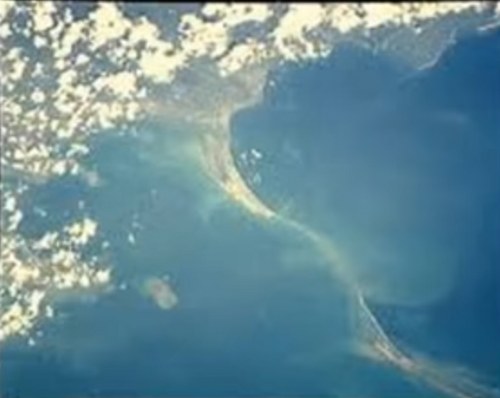Won’t damage Ram Sethu: Centre
New Delhi : The Centre on Friday told the Supreme Court that “in the interest of the nation” it has decided not to damage the ‘Ram Sethu’ bridge for the Sethusamudram project initiated to facilitate navigation between India’s east and west coasts.
Chief Justice Dipak Misra, Justice A.M. Khanwilkar and Justice D.Y. Chandrachud were informed by the Union Ministry of Shipping that it has decided to explore an alternative to earlier alignment of the Sethusamudram Ship Channel project without affecting the Ram Sethu, a chain of limestone shoals off the south-eastern coast of Tamil Nadu.

“The government of India intends to explore an alternative to the earlier alignment of Sethusamudram Ship Channel project without affecting/damaging the Adam’s Bridge/Ram Sethu in the interest of the nation,” the affidavit stated.
“Considering the socio-economic disadvantages of alignment number 6, the government doesn’t want to implement the said alignment.”
Additional Solicitor General Pinky Anand, appearing for the Centre, told the court that Bharatiya Janata Party (BJP) leader Subramanian Swamy’s PIL against the Sethusamudram project can now be disposed off.
Swamy had filed the PIL saying the Ram Sethu should not be touched.
Swamy moved the top court to challenge the project on the basis of religious beliefs — Ram Sethu is believed to have been built by Lord Rama’s army to cross the sea — and sought a national heritage status for it.
The Sethusamudram project has been facing stiff resistance from environmentalists and Hindu groups.
The alternate alignment 4A was to cut through the spit of land just east of Dhanushkodi by-pass and thus save the mythical bridge. But this did not find favour with the experts.
The Rajender Pachauri Committee report said the alternate alignment for building Sethusamudram shipping channel while saving the Rama Sethu was “neither ecologically nor economically” feasible.
Pachauri had given his report after the government asked him to look into the possibility of an alternate alignment.
The committee was set up by the central government on July 30, 2008.
Going into pros and cons of the project, including rising sea level, extreme weather conditions and the possibility of oil spills, the report said: “…It can be seen that the project, including the possibility of adopting alignment 4A, could potentially result in ecological threat that could pose a risk to the ecosystem in the surrounding areas and, in particular, to the biosphere reserve.”
IANS





